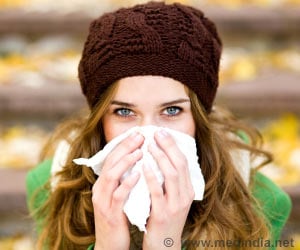What are Allergies?
When we think of allergies the classic signs that come to mind are continuous sneezing, breakout of a rash, or shortness of breath. These signs are unusual responses by an individual in an otherwise normal environment. So, what exactly are allergies? Allergies include immune system-based hypersensitive reactions. There is an increase in IgE or IgG/IgA/IgM antibodies to the allergic reactions. Allergies can result from antibody reactions or cell-mediated reactions. Antibody-mediated allergies are classified as IgE-mediated allergic reactions or non-IgE-mediated allergic reactions. Some of the examples of IgE-mediated allergic reactions are: allergic rhinitis (hay fever), allergic asthma and allergic conjunctivitis among others. Examples of non-IgE-mediated allergic reactions include, non-IgE-mediated conjunctivitis, anaphylaxis, rhinitis and asthma among others. The non-IgE mediated antibodies include IgG that increase in reaction to inhaling protein-filled molds in farms, Actinomyces, and pigeon droppings. When the allergies are cell-mediated, activated lymphocytes cause the allergies, as observed in contact dermatitis. The most common allergies are asthma and hay fever.
The epidemiologist David Strachan hypothesized that minimizing the exposure of an individual to dirt and sanitizing the living environment can increase the risk of allergies. This hypothesis was later termed as the ‘hygiene hypothesis’. It explains the increased level of allergies observed in Western children. The sanitized Western urban environment has resulted in a proliferation of a wide variety of different forms of allergies. The microflora hypothesis states with the constant use of antibacterial soaps, detergents, and antibiotics, reduce the exposure of children to pathogens that can boost immune memory and the immune system. It was observed that allergies were lower in countries like India, Pakistan, and China as compared with the developed countries of the Western world. However, urban areas in developing countries that followed a Western lifestyle displayed similar allergy patterns as the West.
When Does ‘Allergy Season’ Start?
‘Allergy season’ depends on the kind of allergies contracted by the individual. If an individual is allergic to pollen allergy season begins in spring (when there is pollen floating around). Dryness in the atmosphere can result in episodes of eczema. These are allergies commonly observed in the West. In Asia, asthma and allergies to food are observed in plenty.
Allergies in Children
When either one or both the parents have allergies, there is a 70% risk of the child getting an allergy. That risk is much lower (10%) in children whose parents do not suffer from allergies. Eczema (atopic eczema or dermatitis) is a common allergy observed in children. It is characterized by a rash on the legs, arms, and face of the baby. It starts when the baby is less than 2 years old. As the child develops, the rash becomes localized around the elbows, or behind the knees. Generally, eczema is observed in nearly 20% of children. Approximately 6% of the children in the world suffer food allergies
Effects of Allergies
Some of the common effects of allergies are:
- Watery eyes
- Sneezing
- Itchiness in the nose, gums, soles, palms
- Constriction in the throat
- Rash
- Shock and hypotension
- Asthma
- Difficulty in swallowing
- Vomiting
- Diarrhoea
Different Types of Allergies
The different types of allergies are seasonal hay fever (allergic rhinitis), hives, sinusitis, systemic (conjunctivitis, eczema, latex allergy, and food allergies), or perennial (asthma, animal allergy, house dust mite allergy).
What are the Causes of Allergies?
There are different causes of allergies:
- Heredity
- Genetics
- Systemic allergens
- Food
- Antibiotics
- Insect sting bites
- Latex gloves
- Perennial allergens
- Animal hair
- Dust mites
- Aeroallergens – seasonal allergies
- Pollen
- Spores from fungi
- Grass
Home Remedies for Allergies
Natural Remedies for Allergies
Complementary and alternative medicine (CAM) has been used to treat allergies. Chinese herbal medicine, plant aromatic compounds, herbal teas, and lactic acid bacteria are widely used to treat allergies and asthma.

Aromatic compounds: Plants containing aromatic compounds that include, anise, menthol, eucalyptus, camphor, fennel, tolu balsam, are found in products such as Tiger Balm or Vicks VapoRub. They are applied locally on the throat or chest to provide relief from mucosa that is inflamed. Honey, Irish moss, slippery elm, plantains, candies also provide relief to the throat. Thyme, horseradish, Angelica, ginger and tea are some of the other useful herbs in treating allergies.
Diet: Garlic, vitamins (E, C, A), antioxidants, oils from citrus fruits, onions, omega-3 fatty acids, and spices enhance the immune response within an individual. Decreasing salt and sugar intake as well as increasing the intake of magnesium may help regulate brittle asthma.
Antioxidants that are readily found in certain foods have natural antihistamines that reduce the reaction triggered by pollen and allergens. These foods with the flavonoids quercetin and bromelain, also give fruits and vegetables their color. Quercetin helps to balance immune cells to prevent the production and release of histamine, as well as other allergic and inflammatory compounds. Fruits such as apples, oranges and red grapes contain quercetin, as do black tea and red wine.

Probiotic bacteria: Beneficial bacteria, such as Lactobacillus strains are observed in yoghurt, cheese, and other fermented products. Lactobacillus casei is one such probiotic strain that maintains the microflora of the gut of an individual. It has been observed that such individuals are less likely to develop allergies compared with those who do not have any products containing Lactobacillus strains.
Natural Treatments for Allergies
The different forms of treating allergies are as follows:
Allergen avoidance: This is the first step of treating allergies. Once the source of allergy is identified, the physician recommends that the individual avoid contact with the problematic allergen. For example, food allergies can be controlled by avoiding consumption of the food that causes the allergy. Nuts, soy, eggs, cow’s milk are all common forms of food allergens. Similarly, avoiding contact with chemicals, insects by using gloves and protective masks can prevent sting-related and respiratory allergies. Animal allergies also can be taken care of by avoiding or giving away the animal causing the allergies. However, the situation is tricky in the case of dust mites in the house. Research studies have not conclusively reported the influence of house dust mites on bronchial conditions, asthma, or eczema. Hence, avoiding dust mites may not quite solve these problems, and the decision to move to another house or remove problematic carpeting has to be made with caution.

Primary prevention: Parents with allergies are always wary of their babies acquiring allergies. In order to reduce the risk of their children acquiring allergies, breastfeeding is recommended for the first few months of infancy. Individuals are asked to quit smoking since the allergens in smoke can increase the risk of allergies. In addition, hydrolysed milk formulas may be utilized by infants, who show an allergic reaction to mother’s milk.
Allergy Tips for Spring
According to the American College of Allergy, Asthma, and Immunology, individuals who are prone to allergies in spring should take necessary precautions.
- Individuals should close all windows, doors, and vents that allow for circulation of pollen during spring. This should be done in the office, home, and car.
- Individuals should wear a mask to avoid contact with pollen, mold, and grass during gardening or while walking through parks or tree-lined streets.
- Individuals should remove their clothes that were worn outside and take a shower to eliminate the presence of the allergens.
- Avoid going out during the day when large amounts of pollen are found in the atmosphere.

Homeopathic Remedies for Allergies
In contrast to natural remedies that use a combination of herbs to treat allergies, homeopathic remedies utilize only one herb at a time. The other significant characteristic of homeopathic remedies is that the herb is used at an extremely dilute concentration (1 in 1060 or 1 in 10-120). This technique is known as isopathy. Homeopathy uses distinct herbs, such as burnt sponge, sabadilla, bryony, and spikenard. A homeopathic doctor assesses the patient by enquiring about the lifestyle of the patient, the personality, and the kind of symptoms that are expressed. Based on the information, an appropriate drug formulation is provided. Over-the-counter medications can be bought easily based on the symptoms. In the absence of a physician, over-the-counter medications have also been found to be effective. Homeopathic remedies have been effective in treating allergic rhinitis and asthma.
What is Good for Allergies?
Bacteria in the gut or small intestine are beneficial in preventing allergies and other hypersensitive reactions. There are useful bacteria that fall in the category of probiotics. These probiotics protect against a wide range of diseases. Lactobacillus casei is one among many Lactobacillus strains that are found in yoghurt, cheese, and other fermented foods. It has been observed that pregnant women, who take probiotics in the last phase of pregnancy, lower the chances of infantile eczema in their babies. Probiotic bacteria can also have a beneficial effect in preventing asthmatic reactions.
Breast milk is also beneficial in providing protection to babies against allergies. The microflora in the gut is enriched by breast milk in the first few months of infancy.

Prebiotics are substances that enrich the probiotic bacteria. Inulin is a prebiotic obtained from plants. It cannot be digested by humans but it is very useful for bifidobacteria that are found in the colon. By enriching probiotics, prebiotics play a role in reducing allergies.
Certain helminths or parasitic worms obtained from infections such as schistosomiasis and filariasis, provide protection against allergies such as infantile eczema.
Getting Rid of Allergies
While it is difficult to get rid of allergies completely, with the proper allergen identification, prevention, and treatment plan, one can lead a longer, better reaction-free life.
Tips for Allergy Sufferers
- Allergic individuals should identify the allergens affecting them and try and avoid contact with them.
- Individuals with allergies should always carry the appropriate medications to tackle any sudden allergic reaction.
- Individuals with family history should be aware of the possible risks of obtaining an allergy at any point in their lifetime.
- Allergic individuals should consume foods rich in probiotic organisms and prebiotics.
- Individuals should consult an allergist if symptoms persist and cannot be tackled with the precautionary measures. Allergists can recommend the appropriate steps to tackle an allergic reaction and prevent the onset of future allergic reactions.








